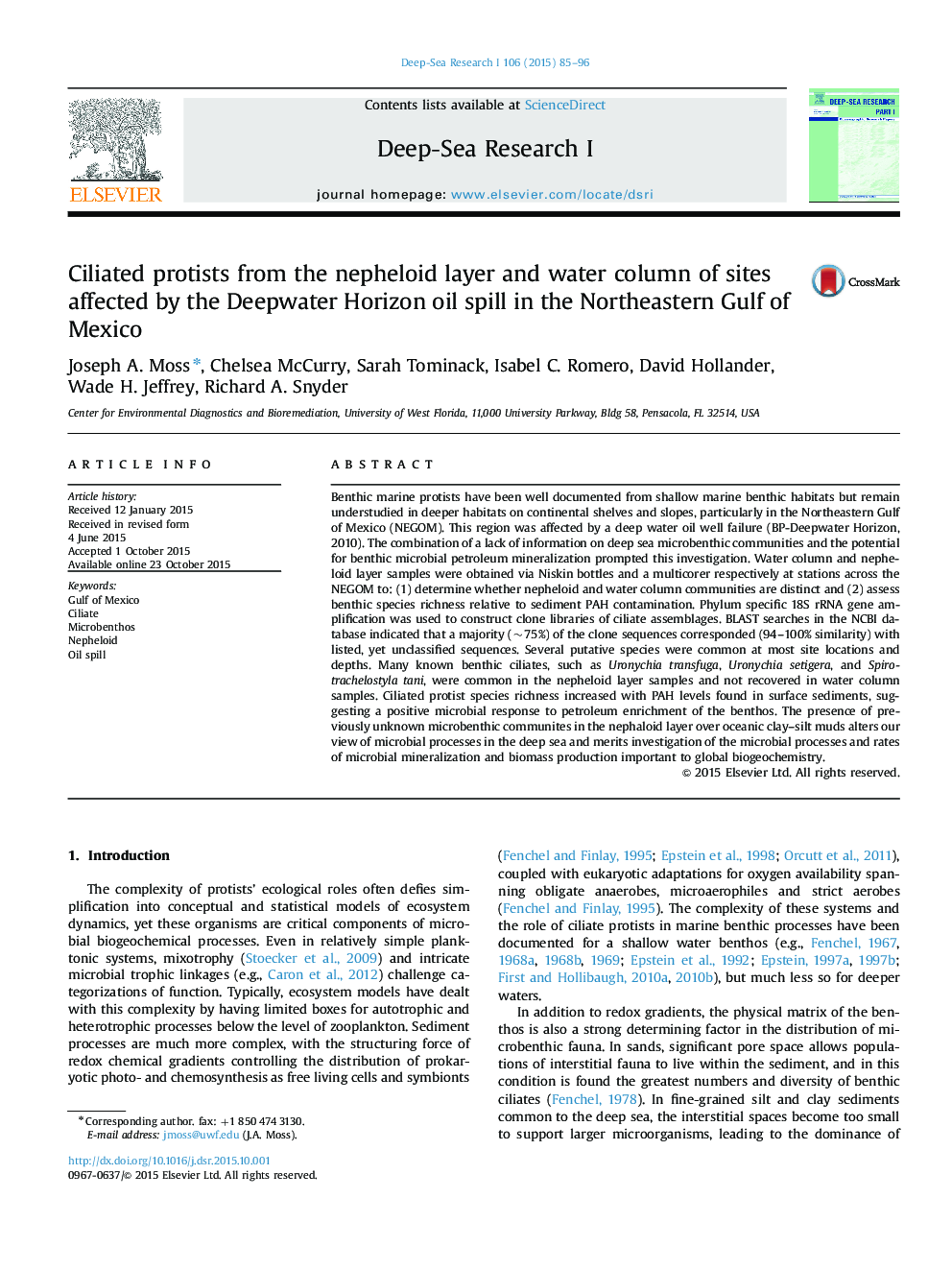| Article ID | Journal | Published Year | Pages | File Type |
|---|---|---|---|---|
| 6383501 | Deep Sea Research Part I: Oceanographic Research Papers | 2015 | 12 Pages |
â¢Ciliate richness increased with PAHs, suggesting a response to petroleum enrichment.â¢A majority (~75%) of the clone sequences correlated with unclassified sequences.â¢Various known benthic ciliates were exclusively found in the nepheloid layer samples.
Benthic marine protists have been well documented from shallow marine benthic habitats but remain understudied in deeper habitats on continental shelves and slopes, particularly in the Northeastern Gulf of Mexico (NEGOM). This region was affected by a deep water oil well failure (BP-Deepwater Horizon, 2010). The combination of a lack of information on deep sea microbenthic communities and the potential for benthic microbial petroleum mineralization prompted this investigation. Water column and nepheloid layer samples were obtained via Niskin bottles and a multicorer respectively at stations across the NEGOM to: (1) determine whether nepheloid and water column communities are distinct and (2) assess benthic species richness relative to sediment PAH contamination. Phylum specific 18S rRNA gene amplification was used to construct clone libraries of ciliate assemblages. BLAST searches in the NCBI database indicated that a majority (~75%) of the clone sequences corresponded (94-100% similarity) with listed, yet unclassified sequences. Several putative species were common at most site locations and depths. Many known benthic ciliates, such as Uronychia transfuga, Uronychia setigera, and Spirotrachelostyla tani, were common in the nepheloid layer samples and not recovered in water column samples. Ciliated protist species richness increased with PAH levels found in surface sediments, suggesting a positive microbial response to petroleum enrichment of the benthos. The presence of previously unknown microbenthic communites in the nephaloid layer over oceanic clay-silt muds alters our view of microbial processes in the deep sea and merits investigation of the microbial processes and rates of microbial mineralization and biomass production important to global biogeochemistry.
